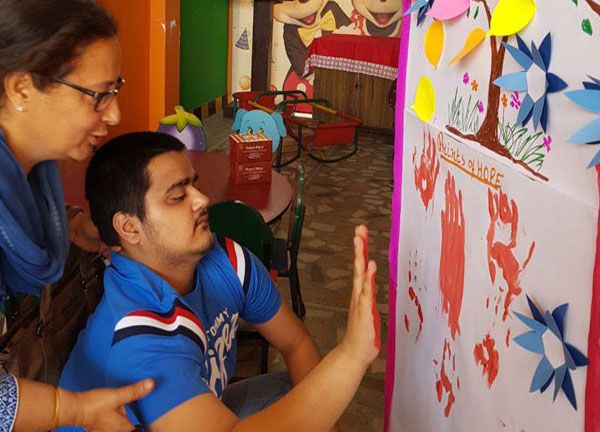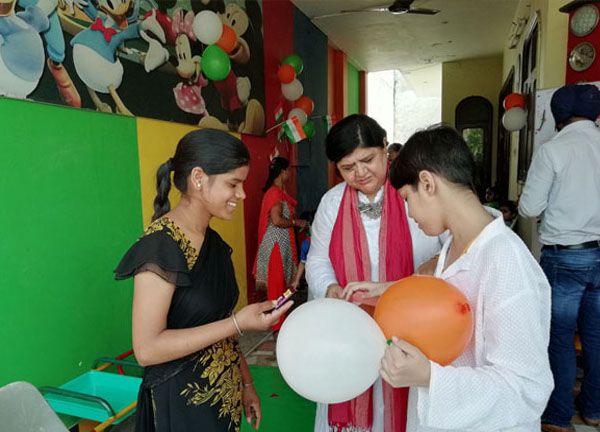Want to talk to us
9873241241
Since several years , for persons with disabilities, attitudes of the community, emotions, stigma, stereotypes and lack of access to rehabilitation services have resulted in adding up to a more limiting situation.
However, in the recent past the trends that have emerged are more encouraging. Let’s see how the perspectives have shaped and evolved to the benefit of those who are disadvantaged.
Models of Disability are theories that help us understand disability. The Religious model is probably the oldest theory in which disability is explained as a punishment, curse or perhaps a blessing. In regions where awareness is still scarce this theory exists. For example, many believe that the person with disability or his family is “washing off past sins”, they are “God’s people or angels who will go the Heaven”. Therefore, this system embraces a lot of positive and negative beliefs. For example, the story of Lakshmi Tatma , who was born in a small village in India, with a conjoined atrophic twin attached to her and looked as if she had four arms and four legs. This child has been hailed by some in her village as the reincarnation of the multi-limbed Hindu goddess of wealth, Lakshmi “and thereby worshipped.
With this belief system the “Charity Model” was inevitable. The Charity Model depicts disabled people as victims of circumstance who deserve sympathy; therefore whatever is done for them is good enough. This has been probably the most pathetic model.
Then came the medical model of disability. Under the medical model, the impairments or differences should be 'fixed' or changed by medical and other treatments, even when the impairment or differences do not implicate illness. The medical model looks at what is 'wrong' with the person, not what the person needs. It creates low expectations and leads to people losing independence, choice and control in their own lives.
As more awareness and well-meaning activists came forward the scenario started changing for better. The Social Model of disability has been hugely empowering for many disabled people as it explains their exclusion from society in a way, unlike other theories that only focus on “what’s wrong” with them. The social model of disability says that disability is caused by the way society is organized, rather than by a person’s impairment or difference. It looks at ways of removing barriers that restrict life choices for disabled people. When barriers are removed, disabled people can be independent and near equal in society.
The Human Rights Model is a landmark in the history of disability activities. The United Nations Convention on the Rights of Persons with Disabilities UNCRPD is an international human rights treaty of the United Nations intended to protect the rights and dignity of persons with disabilities. India ratified the UNCRPD in 2007. The eight guiding principles of the Convention are as follows-
Disability is a part of Human Diversity. Our perspectives have been evolving. The underlying philosophy needs to be of inclusion; because an inclusive society is the one that embraces the best practices and the best intentions; leaving no one behind!!!!!!
This may be a person with autism
Autism is the second most common disorder in the world. While other conditions like
Intellectual disability, Cerebral Palsy, blindness, hearing impairment can be easily identified; it is very difficult to identify autism especially in younger children since most of them “look like any other person”.

Intellectual Disability is a disorder with onset during the developmental period that includes both intellectual and adaptive functioning deficits in conceptual, social, and practical domains. The following three criteria must be met:
As per the medical definition, the cerebral palsy is a non-progressive condition of the brain, however, the cerebral palsy characteristics will continue to be unchanged and the patient has to manage his life with the disabilities.
Cerebral Palsy is caused by a brain injury or brain abnormality that interferes with the brain cells responsible for controlling muscle tone, strength, and coordination. As a child grows, these changes affect skeletal and joint development, which may lead to impairment, and possibly deformities. The main cerebral palsy characteristics are the failure of communication between the body and brain, which results in many disabilities to the affected. The cerebral palsycharacteristics will vary from child to child and the severity of the disabilities depends upon the severity of the damage to the brain.
According to the Individuals with Disabilities Education Act’s (IDEA), multiple disabilities refers to “concomitant [simultaneous] impairments (such as intellectual disability-blindness, intellectual disability-orthopedic impairment, etc.), the combination of which causes such severe educational needs that they cannot be accommodated in a special education program solely for one of the impairments. In many countries of the world the term does not include deaf-blindness.”
ADHD is a common condition that affects children and adolescents, while it is more common without hyperactivity in adults. Adults often tend to become aggressive, abrupt and seem to cross boundaries between good humor and insult.
Individuals with ADHD generally have problems paying attention or concentrating. They can't seem to follow directions and are easily bored or frustrated with tasks. They also tend to move constantly and are impulsive, not stopping to think before they act. These behaviors are generally common in children. But they occur more often than usual and are more severe in a child with ADHD.Symptoms of ADHD in children are generally grouped into three categories: inattention, hyperactivity, and impulsiveness.
A learning disability is a neurological disorder. In simple words, a learning disability results from a difference in the way a person's brain is "wired. The child with LD may appear as smart as his /her peers with an obvious discrepancy between general intelligence and scholastic achievements. the child may have difficulty reading, writing, spelling, reasoning, recalling and/or organizing information when taught in the conventional manner and when left on won to solve problems.
A learning disability it is a lifelong condition. With the appropriate support the child with LD can do well in school and excel in many fields if not education.